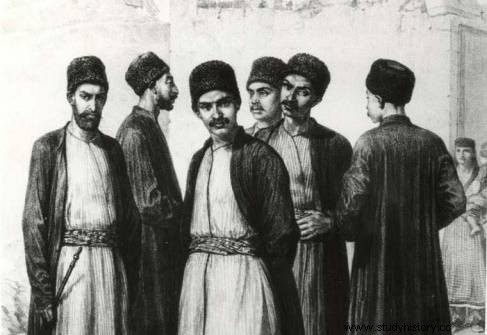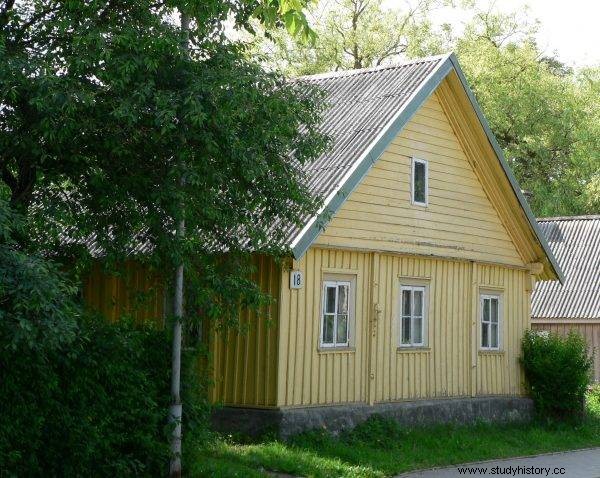They lived in Persia and the Crimea. They went down in the history of our country as brave soldiers. Today Karaims are the smallest minority in Poland.
The history of Karaites dates back to the 8th century AD. She is associated with the figure of Basra Anana ben Dawid, a Jewish leader and scholar . One might ask:where did the Jews end up in Basra? This is Iraq today. Well, this area became the center of Judaism at the time when the Jewish population decided to leave the territory of the Roman Empire. This was especially true of circles opposed to rabbinical authority led at one stage by Anan ben David and originally called ananites .
Karaimi, or the reader
What they had in common was opposition not only to the rabbis, but also to the increasing importance of the Talmud. Anan himself gave every Jew the right to study the Hebrew Scriptures. Moreover, he believed that the commands and prohibitions contained in the Bible should be interpreted literally without adding or removing anything. And here we come to the genesis of the term "Karaims". Since the emphasis was precisely on reading the Scriptures , the followers of Anana's lineage came to be called Kara'im . Why? In Hebrew, the word qara'im just means "reading" or "reading" . The Karaims themselves came to be called that way around the ninth century.

Since the emphasis was on reading the Scriptures, the followers of Anana came to be called Kara'im.
The activities of Anan and his followers began to spread more and more. Karaites even reached Jerusalem, where their first temple - kienesa was built. One of the directions of their movement ran, among others through Persia and Asia Minor. From there they got to the Black Sea basin - to the Crimea. On this peninsula, lived mainly in Kyrkjer, Sołchat, Bakhchisaraj and Kaffa . At that time, Tatars ruled there, but Karaites had - for a community that did not profess Islam - quite a lot of freedom. They were mostly traders.
Currently, there are different groups of Karaims in the world, who are either ethnically or religiously. Apart from the Crimean-Polish Karaims there are also Oriental Karaims , living mainly in the countries of the Middle East, but partly also in the United States, and Karaim Slavs who live in the territory of Russia.
Where did they come from in Poland?
The Karaims later found their way from Crimea to Lithuania. It was not anyone else who contributed to this, but Prince Witold himself. It was supposed to happen during the war expedition of 1397 when, in preparation for his return, the prince took 383 Karaim families with him . As Jan Długosz Witold wrote, captured many thousands of Tatars with wives, children and cattle and kidnapped them as far as Lithuania. There are also opinions that in the case of Karaims it was not necessarily slavery.
It was during the reign of Witold Karaites settled in such places as Trakai, Vilnius, Sałaty, Upita and Krakinów and probably also in the Ruthenian lands, including in Lutsk, Lviv and Halicz. According to some sources, including the official Karaim ones, the settlement there is much earlier. It is supposed to go back even to the mid-thirteenth century.

The Karaims later found their way from Crimea to Lithuania. It was no one else who contributed to this, but Prince Witold himself.
Already in the middle of the 15th century, the Karaites living in Trakai could start organizing their self-government, because Kazimierz Jagiellończyk granted them a special privilege under the Magdeburg Law. In turn, thanks to the privilege of Stefan Batory from 1576 Karaims from various centers in Volhynia gained the right, among others, to to my own judiciary . At that time, there were independent Karaim communities in Volhynia, headed by a clergyman, i.e. hazzan .
From childhood in the war
In their history, Polish Karaims have made themselves known from two sides:as agile merchants, but also as battle-hardened soldiers. At one stage, they even had the right to issue two banners. One of them was stationed as a guard at the Trakai castle, while the other was in the service of the Radziwiłł family.
As their envoy of King Charles XI of Sweden put it: This nation is very few, because from the very childhood they enlisted in war . It was thanks to this brave attitude that, under the privilege of 1665, Jan Kazimierz allowed them to rebuild the kenesa and the school in Trakai. Unfortunately, the plague epidemic of 1710 had a significant impact on the population of this community . Later partitions divided it territorially, significantly hindering communal contacts with each other.
The smallest of the minorities
After World War I, Polish Karaims began to reorganize themselves. The adopted legal regulations favored them. Already on February 7, 1919, Józef Piłsudski, as the Head of State, issued a decree On changes in the organization of Jewish religious communities in the former Congress Kingdom . A significant qualitative change was brought by the Act on the Relationship of the State to the Karaim Religious Association in the Republic of Poland adopted on March 17, 1936, which entered into force on April 21, 1936. The Karaim Religious Union functioned on it until the outbreak of World War II.

Crimean Karaims in traditional costumes
After 1945, however, the Karaim community was very small. There were only about 200-300 people in it. Shortly after the war, most Karaims lived in one of 5 large centers:Warsaw, Kraków, Wrocław, Opole and the Tri-City. In 1946, a youth congress was organized in Wrocław, but the number of people involved in the functioning of the community was systematically decreasing. It was only in 1974 that the Karaim Religious Association was reactivated. It was to cover only the representatives of minorities living in Poland.
Karaimi today
Obviously, the changes that took place in our country at the turn of the 1980s and 1990s created more favorable conditions for the functioning of Karaims. Including for contacting representatives of this group abroad. For example, on August 19-20, 1989 in Trakai (Lithuania) a Karaim convention was held, attended by members of the Polish community.

Traditional Karaim house in Trakai
Currently, Karaims are not a very large ethnic group in Poland. According to the 2011 census, only 313 people declared that they belonged to this group , mainly from the Mazowieckie, Łódzkie and Dolnośląskie voivodships. In our country, however, there exists the Union of Polish Karaims established in 1997 Karaims also have their own quarterly "Awazymyz" and the scientific journal "Almanach Karaimski". Both of these periodicals are published by Karaimska Wydawnicza Bitik. Karaim language learning takes place during summer schools, organized in Trakai.
Bibliography
- Eberhardt, Geopolitical issues of the Polish lands , Institute of Geography and Spatial Organization of the Polish Academy of Sciences, Warsaw 2008.
- Karaimi , www.gov.pl (access:February 25, 2022).
- Krzywicki, Guide. Lithuania , "Rewasz" Publishing House, Pruszków 2005.
- Możdżonek, Karaims - a forgotten nation , "Forum Politologiczne", vol. 5/2007.
- Sulimowicz, Karaimi [in:] M. Kopczyński, W. Tygielski (ed.), Under the common sky. The nations of the former Republic , Bellona, Warsaw 2010.
- History , www.karaimi.org (accessed on:25/02/2022).
